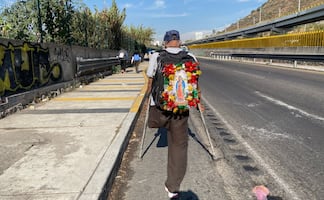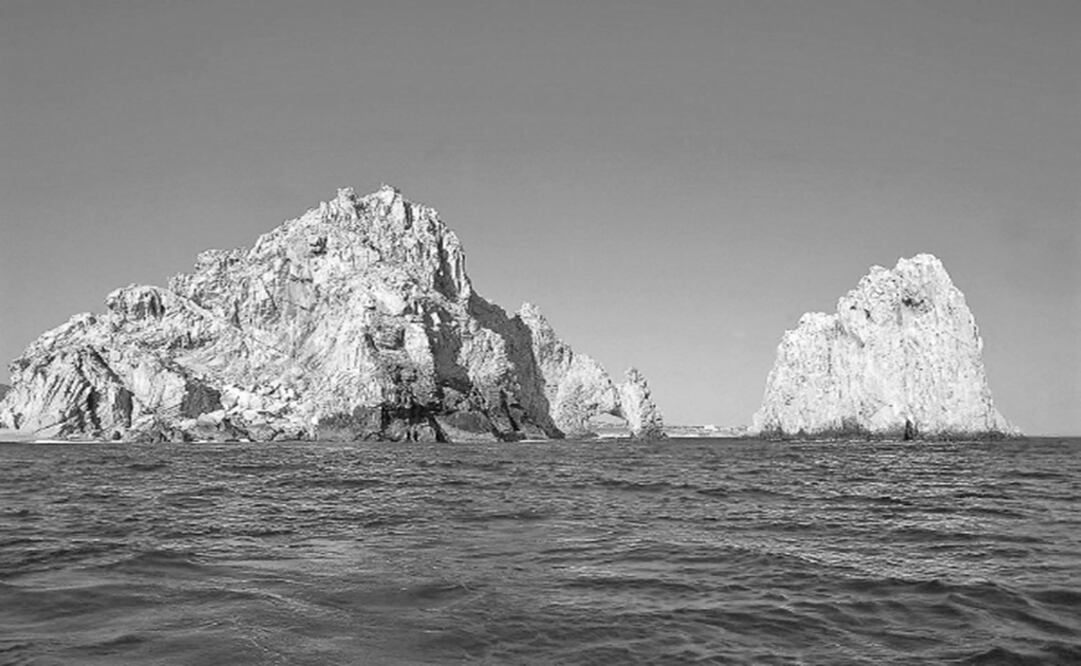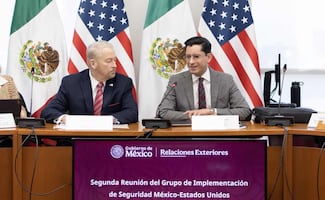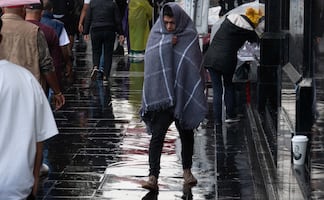Más Información

Fe que desafía límites en la México-Puebla; miles caminan hacia La Villa entre devoción, mandas y agradecimientos

Corte avala que mujeres musulmanas puedan obtener pasaporte sin quitarse hiyab en toma de foto; reconoce “libertad religiosa”

Buque petrolero será llevado a puerto de EU; Venezuela tacha de "robo" flagrante y un acto de "piratería internacional"
For Christians and the Catholic Church, the analysis of facts and the life by which a human being becomes a saint is critical to chronicling the dimensions of sainthood. A saint is a person worthy of honor for their exceptional degree of closeness to God. Saints are exemplary models, exceptional teachers, mediators, or those who live a life with no attachment to material goods or comforts.
Dear Pope Francis, as you begin deliberations for pronouncing Eusebio Francesco Chini a saint, and with the hope of assisting you in this process, we humbly offer some insights into his personality and, particularly, about his love affair with a Mexican sea. We focus our comments on Padre Kino’s life as explorer, naturalist, and, particularly, on his stubbornness for discovering and documenting one of the most amazing natural wonders of our planet: the Sea of Cortez. He was also a tenacious defender of the rights of indigenous communities against the abuses of the Spanish conquistadores.
In 1681, a 36-year-old Italian Jesuit novitiate, Eusebio Francesco Chini (known as Padre Kino), found himself sailing from Europe to Mexico on an assignment to help Spain missionize the New World. Most people know the story of Kino’s exploits in northwest Mexico. It would be Kino who set Europe straight on the geography of Sonora, Baja California, and the Sea of Cortez. But few know of Kino’s abiding, 30-year love affair with that Sea and the Baja California Peninsula. It is a story of unrequited love, even for someone who would be declared a saint 340 years later.
During his years in northwest Mexico, Kino established 23 missions in what is now known as Sonora and Arizona. He made close to 50 exploratory expeditions, travelling, some say, 13,000 kilometers, thus gaining the nickname, “the Padre on horseback.” But he should have been called “the Padre who dreamed of the Sea of Cortez,” because throughout his years in Mexico he dreamed of a sailing fleet that would ply the waters of this sea to supply a string of missions he envisioned on the Baja California Peninsula. Despite repeated attempts, bureaucracy and circumstance prevented Kino from achieving his dream.
Kino’s very first assignment in New Spain was to join an expedition under the command of Admiral Isidoro de Atondo y Antillón, Governor of Sinaloa and the Californias, to cross the Sea of Cortez. He was selected because of his navigational skills, being an astronomer, surveyor, and mapmaker. They were to explore the southern reaches of Lower California, and in April 1683 the expedition set out, in part to find the fabled sea-pearl beds reported by Hernán Cortés and other early Spanish explorers.
Sailing from Mazatlán, they made landfall at Bahía de La Paz. It was there that Kino fell in love with Baja California’s remote landscape and alluring sea. On a second expedition in October 1683, they landed further north, near the beautiful Bahía Concepción. Here, Kino established the first mission in Lower California, which he named San Bruno. He also established here the first vineyard in the Californias.
Ten months after arriving at San Bruno, Kino and de Atondo y Antillón set off on an expedition to find a path across Lower California to the Pacific Ocean. Two weeks later they reached the Pacific. It was the first time Europeans had ever crossed the Peninsula! They tried several times, unsuccessfully, to sail north in the Sea of Cortez to search for better sites for colonization. On one such attempt, winds drove their ship ashore in Sonora in the land of Seri (Comcaac) Indians, and thus the site later came to be called Bahía Kino.
By 1685, the San Bruno colony had faltered, and Kino was ordered to return to the mainland. But memories of the places and times tugged at his heart for the rest of his life, and he continued to petition to be reassigned back to the peninsula. A longing to return also drove him to spend many years exploring for a convenient “missionizing route,” by land, from Sonora to Lower California, and Kino’s most famous explorations in the Southwest grew from that longing. Orders from his superiors kept Kino “land-locked” in Sonora, where he established a home-mission in the foothills of the Sierra Madre Occidental at the Piman village of Cósari, which he renamed Nuestra Señora de los Dolores del Cósari in honor of “Our Lady of Sorrows.”
By 1699 Padre Kino had become convinced that Lower California was not an island, but a peninsula. On one expedition, upon reaching what is today Arizona, friendly Yuman Indians from the Colorado River Valley brought him gifts, including gigantic, pearlescent-blue shells that reverberated in Kino’s memory. These were the shells of abalone, the same giant snails he had seen 15 years earlier when he and de Atondo y Antillón first crossed the Baja Peninsula to the Pacific shore. Kino knew abalone did not occur in the Sea of Cortez, and these shells reaffirmed his suspicion that the land he traveled by horseback stretched all the way to the Pacific shores of Lower California.
Padre Kino made the California approach numerous times, and in 1702 the persistent Padre finally traveled all the way to the Colorado River. He followed it to the swamplands of the delta, far enough to be certain that Lower California was not an island, but a peninsula.
In 1711, Padre Kino left Dolores on a land trek to map the upper Gulf of California. During a stopover at the Piman village of Santa María Magdalena de Buquivaba, a town in northern Sonora now known as Magdalena de Kino, he dedicated a new chapel to his patron saint, St. Francis Xavier. The night of the dedication—just after midnight, March 15, 1711—the good Father fell ill and died.
After leaving his San Bruno mission in 1685, Kino never realized his romantic dream of again sailing across his beloved Sea of Cortez. But throughout his adult life the region to the west tugged on his spirit, driving him to make discoveries and see lands that no European had ever seen before. Today, three centuries after his death, we celebrate the life of Padre Eusebio Francesco Kino—scientist, cartographer, and explorer of the unknown.
Noticias según tus intereses
[Publicidad]
[Publicidad]











